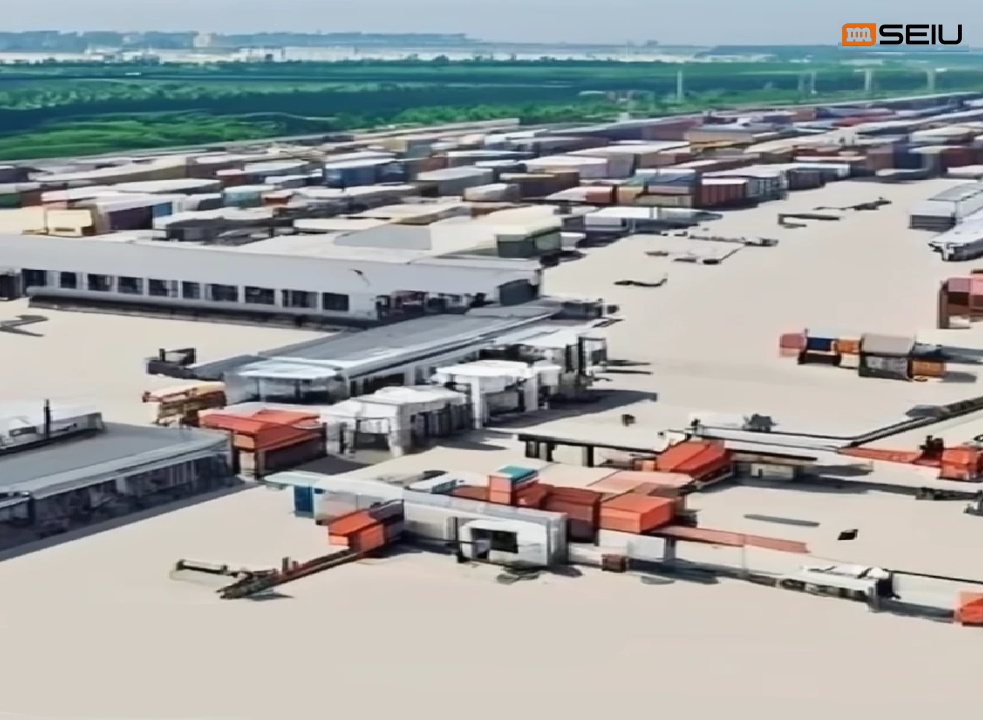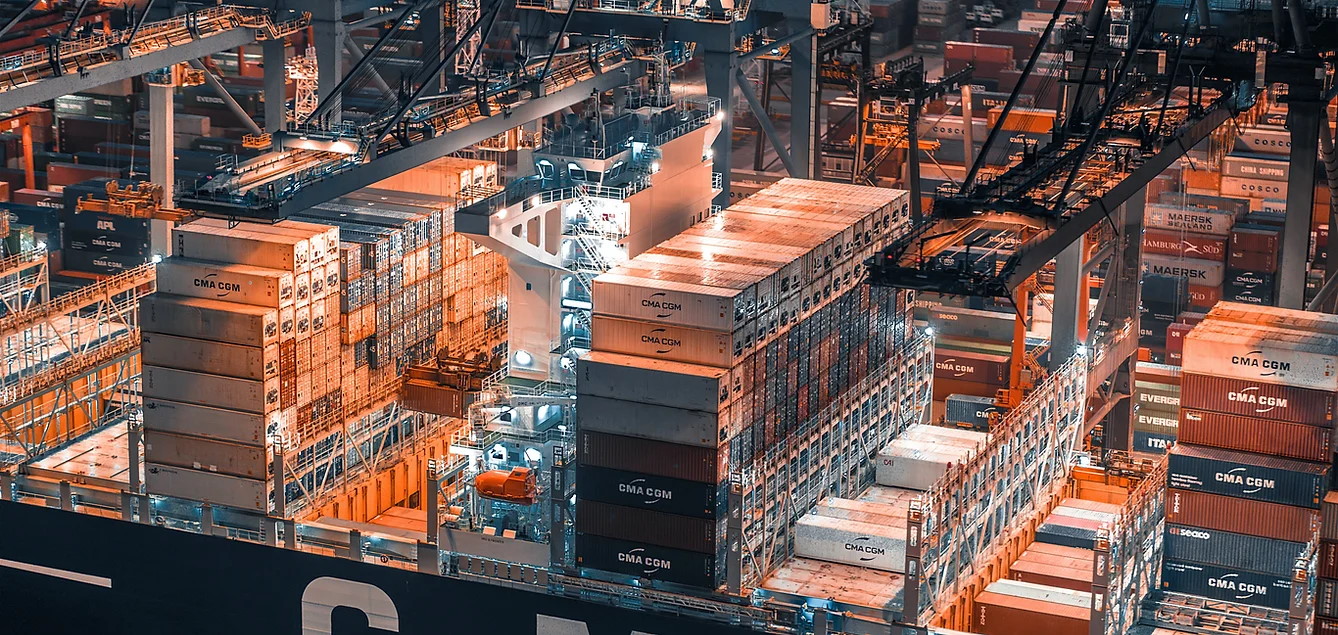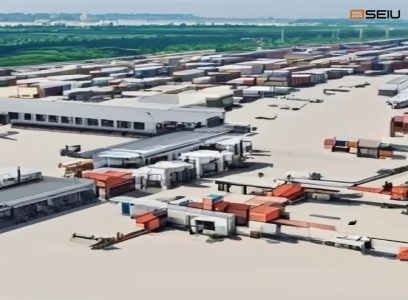
Зміст
1. Introduction
2. Types of cargo terminals:
2.1. Postal terminals
2.2. Road freight terminals (road ports)
2.3. Railway cargo terminals (dry ports)
2.4. Air cargo terminals (airports)
2.5. Sea and river cargo terminals (seaports and river ports)
3. Features of the cargo terminal selection
4. Conclusion
Introduction
Not all logistics chains can boast of the absence of such a link as a cargo terminal. Those that can, claim to be the most environmentally friendly. Let’s take a quick look at the types of terminals.
Types of cargo terminals
If you dive deeper into the topic of terminal handling, you can get to the bottom of international space stations and gas distribution systems. Both have the right to be considered terminals. But I propose to focus on the most common and understandable types of terminal cargo handling.
Postal terminals
They are owned or managed by private and public postal and courier operators.
As a rule, these are covered warehouses with an adjacent territory for the free movement of vehicles. The warehouses are equipped with shelving, conveyor belts, and car ramps.
They handle cargo delivered by postal and courier services. If international cargo is handled, they may include a customs post and offices of other controlling services on their territory.
They are almost always closed to the public.
Road freight terminals (road ports)
They are located near highways, along state borders. They can be owned by both private and state-owned companies.
Furthermore, they are located on large enough areas to allow free maneuvering of road trains. Commercial covered warehouses and weighing equipment may be located on their territory. If the terminal is located near the border or is a place of arrival for international cargo, then customs posts will be located on its territory. Such terminals may have customs warehouses.
Automobile terminals can handle the widest range of goods transported by road.
Road ports are almost always open for public use.
Railway cargo terminals (dry ports)
The main locations are railway hubs and border stations. In Ukraine, for example, many terminals are owned by the state-owned company Ukrzaliznytsia. These are the so-called freight yards and container terminals of the Liski CTS (https://liski.ua/). Rail freight terminals may be owned by private operators.
The structure of railway terminals may include specialized ones, such as grain elevators, container yards, transshipment of liquids, bulk and general cargo. Each structural unit has a specialized infrastructure for handling a particular cargo. These include storage facilities for bulk and liquid cargo. Container reloaders, open and closed warehouses. All terminals have a wide network of railroad sidings for fast handling of freight trains.
Border rail terminals usually house customs and other services to control the movement of international cargo. Domestic terminals can also be points of arrival for international cargo.
Railway terminals mainly handle bulk cargo of the widest range of goods.
Both public and private terminals are available for public use.
Air cargo terminals (airports)
They belong to the critical infrastructure. Airports are mostly owned by government agencies.
Almost every city with more than a million inhabitants has its own airport. But not every airport has a cargo terminal.
Air cargo terminals are almost always points of arrival for international cargo. Therefore, all relevant services have a presence at airports.
All cargo delivered by air is handled at air cargo terminals. This includes: small expensive cargo, medical cargo, food cargo, and perishable cargo.
Airports and their cargo terminals are available for public use.
Sea and river cargo terminals (seaports and river ports)
They also belong to the critical infrastructure. But even in Ukraine, private sea and river terminals are appearing more and more.
It is rare to find seaports and river ports that are focused on handling a narrow range of cargo. Most often, a port has several specialized terminals in its structure. These can be ro-ro terminals. And fish terminals with special refrigeration equipment in covered warehouses. And almost any sea and river port has terminals for transshipment of bulk, liquid, container and general cargo.
A port is often the water gateway of a state. Therefore, almost all sea and many river ports are points of arrival for international cargo. Customs posts and units of many other services controlling the movement of international cargo are located on the territory of ports.
The range of cargo handled by ports is wide. These include groupage containerized cargo, commodities, and huge equipment or military cargo.
Sea and river ports, except for military ports, are available for public use.
Features of the cargo terminal selection
When organizing the shipment of parcels and small cargo, you should pay attention to the delivery speed and coverage of the postal operator or courier service. Terminal processing is the internal kitchen of the operator, and we cannot influence it in any way. The most well-known services, such as Nova Poshta in Ukraine (https://novaposhta.ua/) or InPost in Poland (https://inpost.pl/), have a huge network of acceptance points, post offices and distribution hubs in the countries of their presence. Having many orders, these companies offer reasonable prices for their services.
The criteria for our selection of air cargo terminals are usually also limited. I would pay attention to the distance of such a terminal from the end user. An equally important factor would be the presence of a developed network of highways and railways nearby.
When choosing a truck terminal, you should pay attention to its location, availability of certain types of warehouses, and loading and unloading equipment. The availability of modern and developed infrastructure will affect the throughput capacity of such road ports, the speed of cargo handling and, as a result, the cost of their services. If you need to handle international cargo, you should pay attention to terminals that have customs posts and customs warehouses.
There are many more details to consider when choosing a railway terminal. One of them is specialization. Always consider the ability of a particular terminal to handle your type of cargo. If it is containers, then there should be container reloaders and storage areas. If it is liquid cargo, then pumping stations and storage tanks are required. Also, pay attention to the number of access roads. Does the terminal have the ability to handle trains or only carload shipments. This will affect the terminal’s throughput and the speed of cargo handling. When organizing international deliveries, it is worth choosing terminals that have all the necessary control services, including customs warehouses. For example, Ukrainian, western, and border terminals, among other things, are characterized by the availability of European narrow gauge (1435 mm) and Ukrainian broad gauge (1520 mm). Rail terminals with two gauge sizes are able to handle international cargo in both directions with lower logistics costs for their customers.
If your supply chain includes terminal cargo handling at sea or river ports, there are also some nuances. Not every river port has the ability to transship containers, for example. And not every container terminal at a seaport can accept “mother” container ships, but only works with various feeder services. Feeder service always increases the delivery time of containers. The specialization of seaport and river port terminals is important when choosing them. But you should also pay attention to the depth of the approach channels. Depths of berths, length of berths and their number. These parameters affect the choice of the type of vessel you are going to use to transport your cargo. Equally important is the availability of sufficient loading and unloading equipment. The number of berths and terminal mechanization facilities affect the speed of vessel handling. The presence of international cargo movement control services at the terminal will also contribute to their quick processing.
Conclusion
As you can see, choosing a suitable terminal for handling your cargo requires experience and certain knowledge. The managers of our team have a professional approach to building supply chains for any type of cargo. At any type of terminal, your goods will be handled in compliance with all 5 or even 7R.
Author: Mykola Soloviov
You will also be interested in: DETERMINING THE TYPE OF TRANSPORT.





